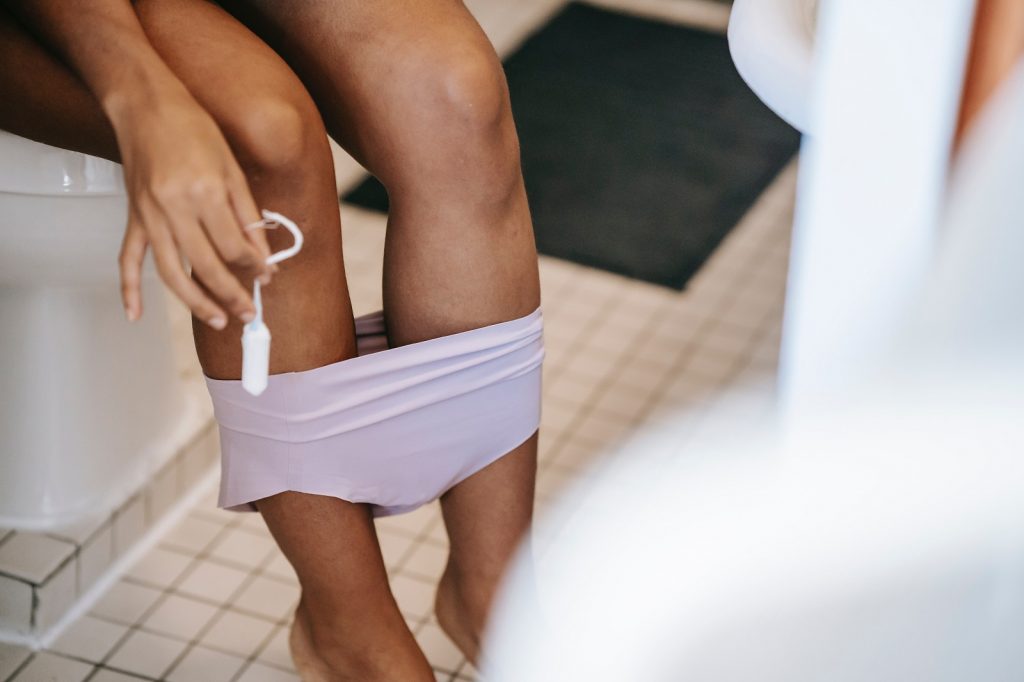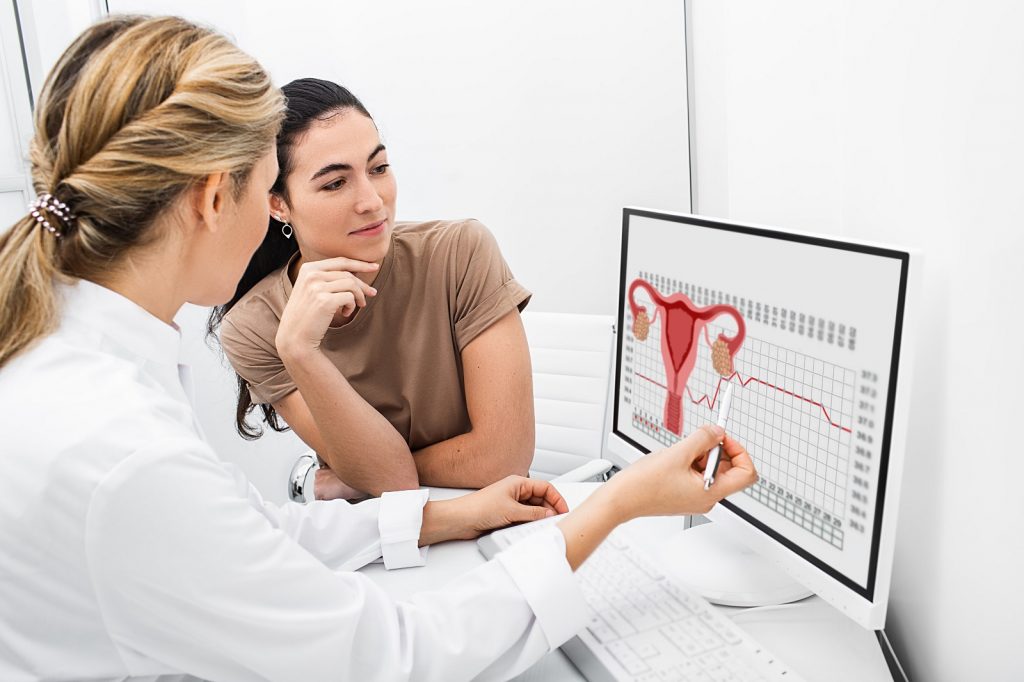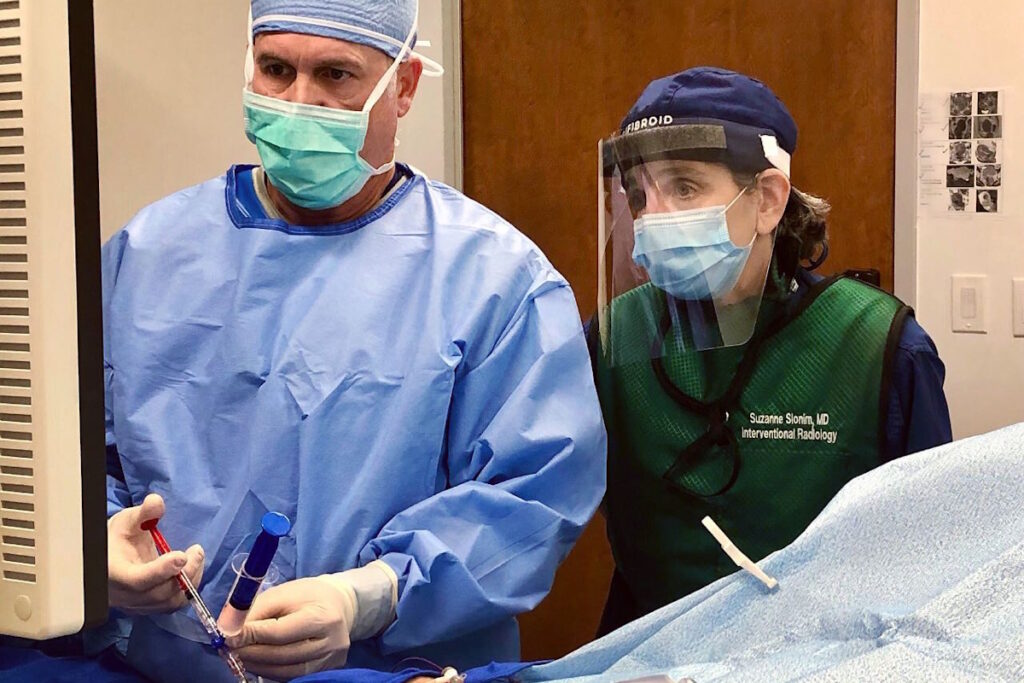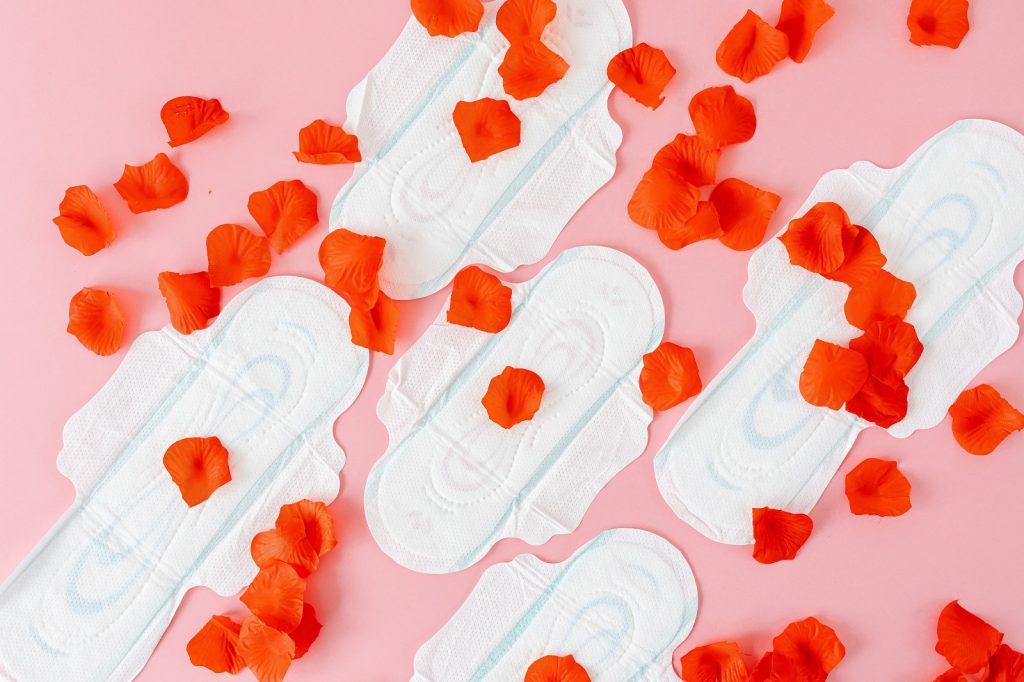As women we know our menstrual cycles can be rough at times, to say the least. Cramps, bloating, headaches—all telltale signs of “that time of the month.” Because all women are unique, and the topic of our period is not something casually discussed often with friends, it can be difficult to know exactly the difference between normal and irregular periods. Many of us believe the length of our period, the amount of bleeding, level of pain, and even how many tampons or pads we use in a day is normal in relation to other women. As a result, we don’t even question or wonder if we should see a doctor for possible irregular periods.
It’s no debate that women of childbearing years should expect to have only one period per month like clockwork. If you experience bleeding between periods or your period is heavier, longer, and more painful than what you are used to, these can be symptoms of irregular periods. Periods that are not regular may indicate an undiagnosed gynecological condition.
What Does Normal Flow and Abnormal Flow Look Like?
Since every woman’s flow or menstrual cycle is unique, it can be challenging to define what is normal vs. abnormal in some cases. For example, women who experience heavy or irregular bleeding within the first two years of puberty may find that usually subsides on its own. Then again, others might not. Some women experience bloating, cramping, pain, etc., and others don’t. Some women who have painful periods may not see the same symptoms every time.

With that said, normal menstrual flow typically lasts approximately three to eight days and occurs every 22 to 38 days. The menstrual cycle is counted from the first day of one period to the first day of the next. One women’s average flow may be light for another. The best way to determine what is normal for you is to track your cycle. https://flo.health has a period and cycle tracking app making it easier to spot irregularities.
Irregular periods can be defined as anything out of the norm for your body. This can include but is not limited to:
- Heavier than normal bleeding or clotting
- Inconsistent menstrual cycles
- Bleeding between periods and/or after sex
- Periods that last longer than seven to eight days
- Bleeding after menopause
Each soaked normal-sized tampon or pad holds a teaspoon (5 ml) of blood. Flow of more than 80 ml per menstrual cycle is considered menorrhagia or heavy bleeding.
Additional signs of heavy bleeding are when you must change your tampon or pad after less than two hours, pass clots the size of a quarter or larger, must use multiple types of sanitary product together like tampons and pads, or are bleeding through to your clothes or bedding. Seek immediate medical help if you soak through four or more pads or tampons in a two-hour period. That is considered severe, acute bleeding.
What Are Causes of Irregular Periods?
Abnormal vaginal bleeding may stop on its own, as there are many reasons for it that may or may not be a cause for concern. For instance, early pregnancy can cause surprise spotting between periods. Hormonal changes and birth control (pills, patches, injections, rings, etc.) can also be a culprit. Abnormal bleeding is also commonly caused by hormone imbalances in teenagers or in women who are approaching menopause.
In each case, your doctor may offer non-invasive solutions or suggest waiting to see if the problem gets better.

But irregular periods can also be a sign of more serious complications. If left unchecked, you could develop anemia, a condition brought on by excessive blood loss that could make you tired and very weak.
More serious causes of vaginal bleeding are:
- Fibroids — These are non-cancerous growths inside a woman’s uterus. They can differ in size and either stay that way or grow at different rates. Fibroids can occur in women younger than 35, but most patients we see are between the ages of 35 and 54.
- Polyps and infections — Another non-cancerous growth, polyps form on the lining of the uterus and cervix. Infections can also develop in the cervix or lining of the uterus for many women.
- Sexually transmitted diseases — In some women, irregular and painful periods can be a sign of STDs.
- Uterine and cervical cancer — Irregular periods could be a sign of cancer in extreme cases. This makes it even more important to stay up to date with regular gynecological exams and rule out serious conditions.
Could Fibroids Be the Source of Your Irregular Periods?
Researchers estimate that 70-80% of all women develop fibroids. Some women do not experience symptoms at all. However, there are many who experience symptoms ranging from pelvic pain and pressure to pain during sex, back and leg pain, constipation, and yes, heavy menstrual bleeding and irregular periods. What is surprising, however, isn’t the number of women who have fibroid symptoms—it’s how many think the symptoms are normal and simply part of being a woman with a menstrual cycle.
While it’s true that women may experience health issues as they age, there is nothing normal about fibroids or the life-interrupting symptoms they cause. Rather than wait, it is important to question these symptoms and seek treatment from a doctor now. If fibroids are the cause of your irregular periods, you do not have to live with the symptoms. You have options.
For years, the standard method of fibroid removal was surgical procedures such as a hysterectomy and myomectomy. In some cases, they may still be the recommended treatment option. But in today’s world of evolving technology, it is always wise to seek a second opinion.
At Fibroid Institute Texas, we are dedicated to treating fibroids and reducing fibroid symptoms using Uterine Fibroid Embolization (UFE), the gold standard in non-surgical fibroid treatment. UFE is a non-invasive procedure that only takes about an hour and offers a quicker recovery time than surgery (7 days for most patients).
Advantages of the UFE procedure at Fibroid Institute include:
- Procedure typically completed in under an hour
- In-office procedure instead of hospital stay
- Recovery time is 7-10 days
- Tiny wrist puncture, no need for vaginal access
- Avoid side effects of pharmaceutical hormone therapies
- All fibroids may be treated at the same time
- No incisions, which means no surgical scarring
- Over 90% of patients see dramatic improvement in symptoms
The UFE procedure restricts blood flow to the fibroids, causing the fibroids to shrink and die. When performed by the board-certified interventional radiologists who specialize in UFE at Fibroid Institute, many patients experience a high success rate with minimal discomfort.

Get Relief from Irregular Periods Caused by Fibroids
Many women don’t know what is normal and not normal when it comes to their time of the month. As a result, they continue on, unaware they are experiencing irregular periods and that something can be done. If you believe this may describe you, it is a good idea to take a consultative approach with your doctor and determine the best course of action for you.
At Fibroid Institute, we are dedicated to helping women who have been suffering through irregular periods caused by uterine fibroids. Our board-certified interventional radiologists are the leading South Texas and North Texas fibroids doctors with a 5-star fibroid practice as rated by patients.
Most medical insurance companies cover the cost of UFE. Schedule your consultation today by calling our Dallas fibroid clinic at 214-838-6440 or our Houston fibroid clinic at 713-903-3733. Patients who act now can be on the road to recovery quickly.
"*" indicates required fields
Prior to starting any new treatment or if you have questions regarding a medical condition, always seek the advice of your doctor or other qualified health provider. This information is not a substitute for professional medical advice.
Fibroid Institute Texas serves the Dallas and Houston areas including Addison, Carrollton, Plano, Frisco, McKinney, Allen, Fort Worth, Grand Prairie, HEB, Arlington, Hutchins, Irving, Duncanville, DeSoto, Cedar Hill, Lancaster, Cockrell Hill, Highland Park, University Park, Park Cities, Garland, Mesquite, Richardson, Dallas, Sherman, Houston, Sugar Land, Katy, Webster, Clear Lake, The Woodlands, Universal City, Spring, Kingwood, Stafford, Conroe, Texas City, Cypress, League City, Bellaire, and more.

